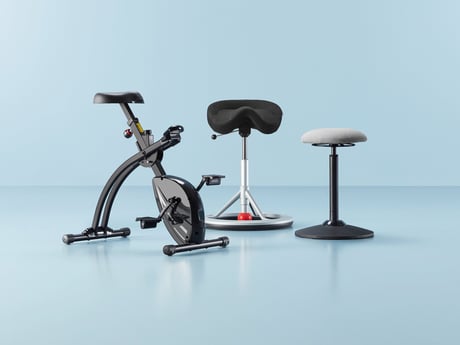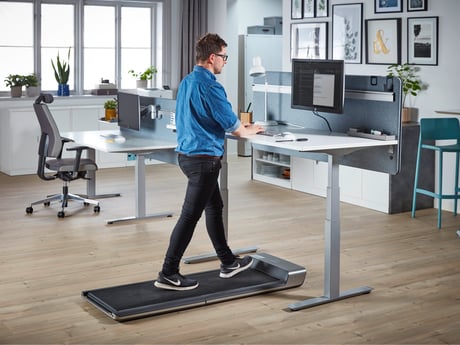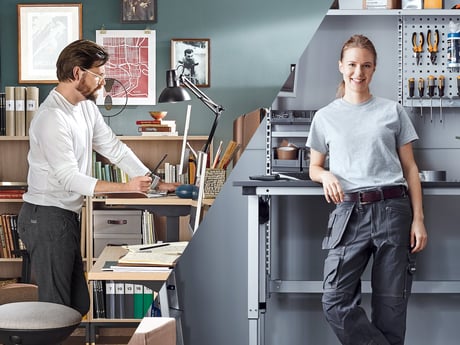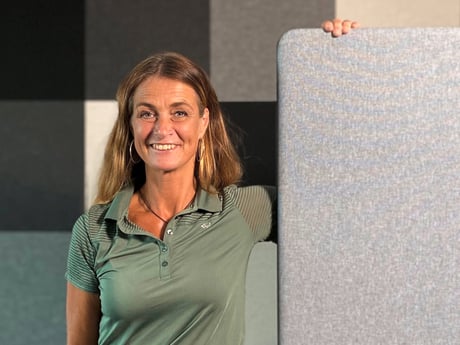- AJ Products UK
- Blog: Tips to Inspire Happiness at Work
- Ergonomics in the workplace
- How dynamic sitting can reduce back pain and musculoskeletal problems
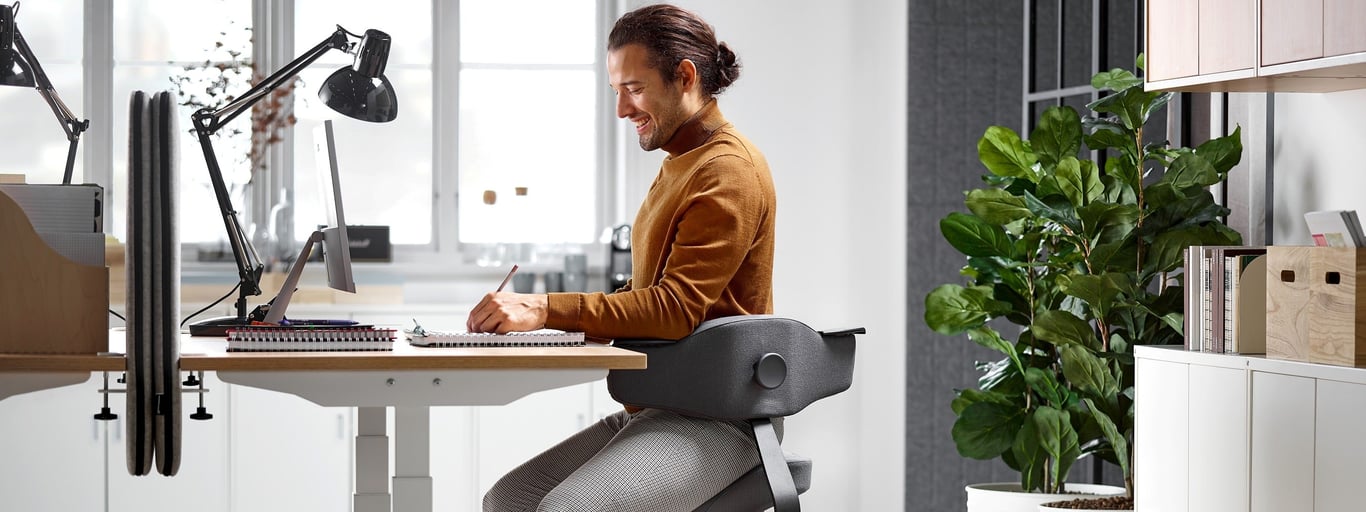
How dynamic sitting can reduce back pain and musculoskeletal problems
What is dynamic sitting?
Dynamic sitting is an ergonomic approach where your body is encouraged to move naturally while seated. Unlike static sitting, which can lead to slouching and pressure on the spine, dynamic sitting engages core, back, and leg muscles, improves circulation, and supports spinal alignment. In the office, this can reduce the risk of back pain, neck strain, and other musculoskeletal problems.
How to improve your sitting at work
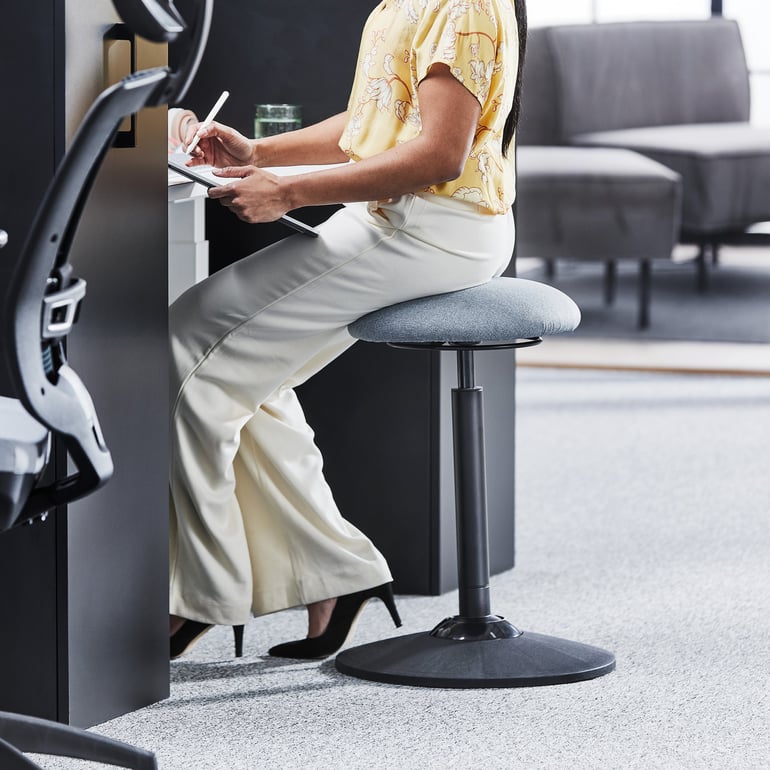
Sit on a balance stool or active chair
A balance stool (or active chair) keeps your body moving while you sit by encouraging the same natural shifts in posture that occur when standing or walking. This movement improves posture, reduces stress on the body and strengthens back and core muscles. There are a number of different types of active seat available including balance balls, wobble stools and saddle chairs. What they all have in common is that they make your body work to keep you in an upright position, engaging a range of muscles in your back, legs and abdomen. These chairs also require a more open angle between your legs and torso, which improves the alignment of your spine in relation to your pelvis and prevents you from slouching. The new position also makes your legs do more work, which takes the pressure off your lumbar region and reduces strain on the discs, helping to alleviate back pain.
Use an adjustable footrest
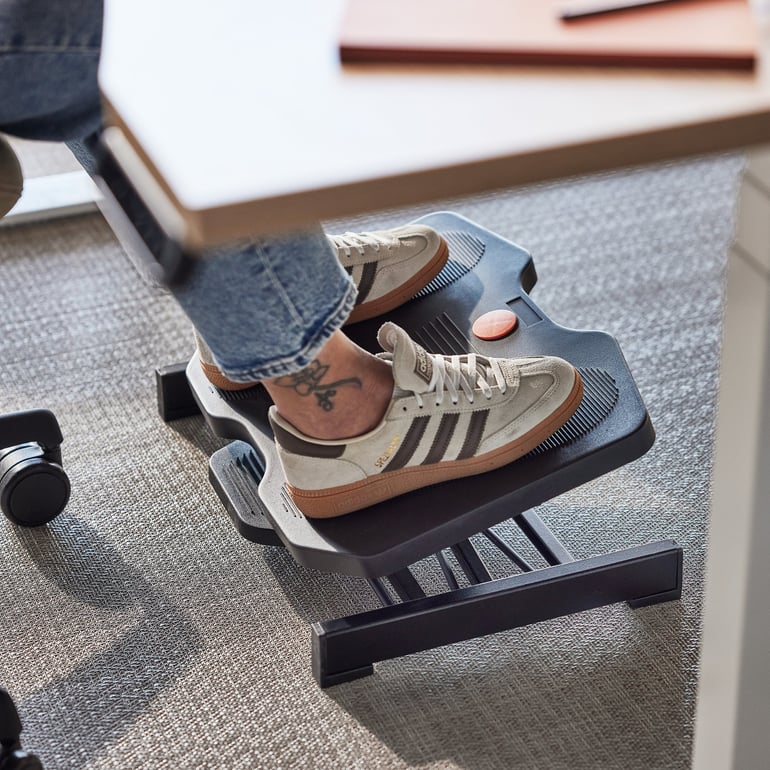
Incorporate desk exercises
Small movements throughout the day can make a significant difference. Try these simple exercises at your desk:
From head to toe:
Move your head from side to side: roll your neck slowly in a circular motion and move your head from side to side to activate the muscles in your neck.
Stretch your arms: lock your hands together and stretch your arms out straight in front of you or above your head with your palms facing out to release stress on your shoulders.
Clench your buttocks: clench and release your buttocks (five seconds each) to strengthen the gluteus maximus. Strengthening this muscle prevents your lower spine and hamstrings from working harder than necessary. For best results, repeat this exercise 30 times twice a day.
Swing your legs: keep your legs moving beneath your desk by kicking and swinging them.
Roll your ankles: roll your ankles in a circular motion to stretch your lower leg muscles.
Repeating these exercises twice a day can support long-term spinal health and overall musculoskeletal wellbeing.
Key Takeaways
FAQ about dynamic sitting
- Dynamic sitting is an ergonomic approach that encourages natural movement while seated, engaging core, back, and leg muscles to improve posture and reduce strain.
- By promoting movement, maintaining proper spinal alignment, and reducing slouching, dynamic sitting alleviates pressure on the lumbar region and helps prevent back pain.
- Active chairs, balance stools, saddle chairs, adjustable footrests, and sit-stand desks all support dynamic sitting and encourage healthy posture at work.
- UK regulations require employers to create safe, healthy office environments through clear legal guidance on ergonomics and employee wellbeing. This includes legal obligations to assess risks, equip employees with ergonomic furniture, and train staff on safe workstation habits to prevent musculoskeletal injuries and other health issues.
